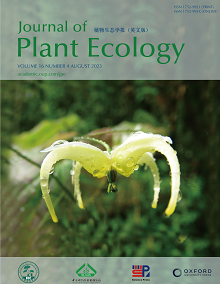Current Issue
-
 Volume 16 Issue 4
Volume 16 Issue 4
Single flower of Epimedium chlorandrum Stearn after nocturnal rain. The species is endemic to Sichuan Province, China. Each flower consists of four green outer sepals that are shed when the flower opens, four conspicuous white or pink in the middle and white on both sides’ inner sepals, four yellow petals each with a saccate nectar spur like an umbrella, which shields the anthers and stigma from rain wash and prevents rainwater from entering the spurs and diluting the nectar. The photo was taken in the mountain of Baoxing County, Ya'an city, western Sichuan Province, China, where the E. chlorandrum Stearn are frequent and locally abundant. Photo taken by Qiu-Mei Quan. See Qian et al. in this issue.
IF: 3.9
CiteScore: 5.7
CiteScore: 5.7
Editors-in-Chief
Yuanhe Yang
Bernhard Schmid
Yuanhe Yang
Bernhard Schmid
CN 10-1172/Q
ISSN 1752-9921(print)
ISSN 1752-993X(online)
ISSN 1752-9921(print)
ISSN 1752-993X(online)







